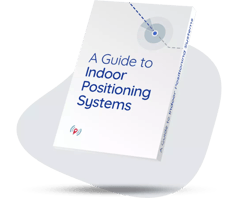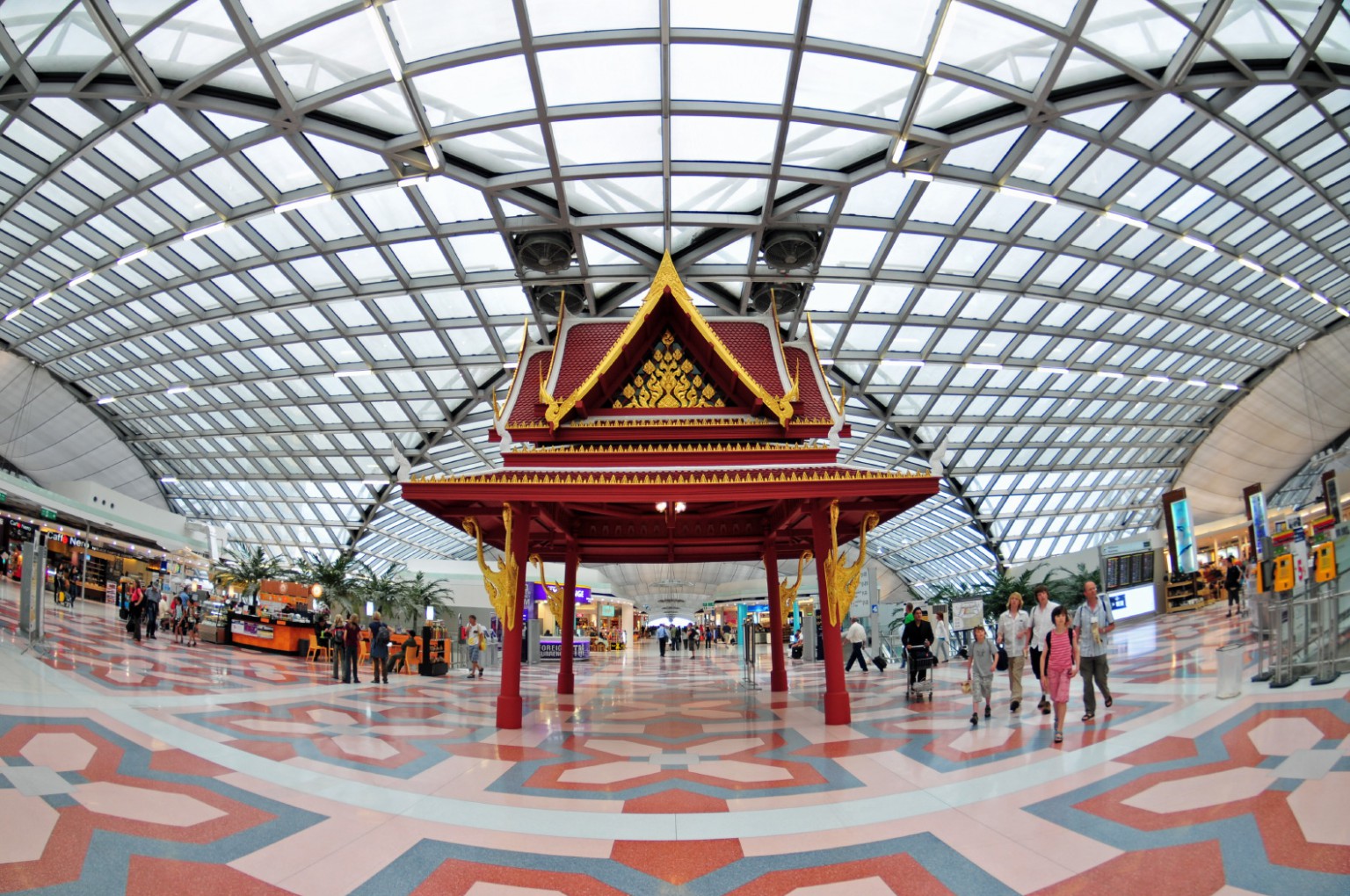You might expect that companies like Google would have every inch of our physical world mapped with tools such as Google Maps, and to an extent, you would be right.
Sure, Google Maps can find directions from your home to a shopping mall, airport, medical facility, and more. It can give you the fastest route and the shortest commute using GPS signals. But what happens when you arrive at your destination and need to go to a specific shop, departures at the airport, or a doctor's office?
The major challenge is to provide a scalable and accurate positioning solution for where we spend 80% of our time - indoors!
In this article, we’ll explore 6 significant challenges for a high-performance indoor positioning system and how we developed our positioning algorithms to meet these challenges.
We'll also explain:
- The difference between absolute and relative positioning.
- How to calculate a user's orientation without a compass.
- How we achieve smooth indoor-outdoor transitioning without a glitch.
Meeting 6 indoor positioning challenges head-on
There are numerous challenges an indoor positioning system must address to deliver an optimal end-user experience. Here are a few of the more critical requirements.
- Accuracy
- Orientation
- Easy maintenance
- Multi-level detection
- Indoor/outdoor transitioning
- Works without internet access & in the background
With Pointr’s indoor positioning algorithm, we help overcome these challenges and deliver a faster, smoother, and more accurate indoor positioning and wayfinding experience for our clients worldwide.
Accuracy
A high degree of accuracy is essential, as a mistake of just a few meters can place you in front of a completely different Point of Interest (POI), and you could, for example, end up in the wrong meeting room or another aisle on a retail floor! Therefore, high accuracy is a must for an intuitive app that users can confidently rely on.
We addressed accuracy by combining two positioning methods, beacon-based and inertial, with our machine-learning algorithm that reassesses probabilities to accurately locate a user's position. Most of our competitors typically rely only on beacon-based solutions. We'll look into challenges and our approach towards both methodologies in the following.
Absolute positioning (Beacon-based)
Beacon-based positioning, as suggested by its name, broadcasts a signal periodically; there's only one-way communication with the users' phone - similar to how GPS works in an outdoor environment but without the accuracy required in an indoor environment. However, it is low cost - each beacon costs ca. 5 - 20$, is easy to deploy, and most smartphones have Bluetooth capability, even for the lowest tier devices on the market.
Most beacon-based indoor positioning systems leverage either "fingerprinting" or "trilateration" to position a user's location. Fingerprinting requires the system to record a radio map of an environment and involves recalibrations every time a building layout is changed, which generates higher deployment efforts, see Fig 1. This makes it an inflexible and non-scalable solution for businesses that own hundreds, if not thousands of buildings, and that's why we don't use fingerprinting at Pointr.
Fig 1. Fingerprinting method requires manual work to record signal strengths for every corner of a building, it might work well in the beginning, but it decays over time and it can't scale.
Trilateration leverages RSSI (received signal strength indication) to build a geometric model based on the distance estimation, see Fig 2. However, the reality is that, without a complex calculation behind this method, the distance estimation can be immensely affected by environmental factors, see Fig 3 & 4. Thus it can be challenging to get accurate positioning if we only rely on beacon-based solutions.
|
Fig 2. Trilateration in theory |
Fig 3. Trilateration in reality |
Fig 4. Signal strength decays when users move away from the beacon |
Pointr's solution is loosely based on trilateration by assigning each beacon a weight based on its estimated distance, measurement time, and signal quality. Our positioning results rely more on ratios than absolute distance values, see Fig 5. We then leverage these validation data to train our machine-learning algorithms, meaning that the more deployments we do, the more training data we obtain to enable a more accurate indoor positioning system - we are now live in 5,000+ venues worldwide.
Fig 5. Imagine a set of springs; some with more strength can pull the positioning point nearer to themselves.
Relative positioning (Inertial)
The inertial method leverages mobile phones' built-in motion sensors to measure how far you've walked and which direction you took in a relative aspect. It works well for short-term positioning but doesn't anchor users' real-time location on the floor plan. For example, it lets your users know they move 10ft from one point to another without knowing their start and endpoints. Thus, if your starting point is slightly off, it will be off throughout your journey and become less accurate over time.
At Pointr, we leverage the built-in phone motion sensor to measure a user's phone's acceleration and rotation speed to simulate the behavior of the human step (frequency & distance estimation) and collect data on a user's walking speed, see Fig 6.
By combining inertial and absolute (beacon-based) positioning methods, our machine-learning-based algorithms can calculate accurate and responsive user positions and provide a smooth blue dot/wayfinding experience for our users.
Fig 6. Leverage inertial (motion) sensors to estimate the relative positions of a user.
Want to learn everything there is to know about indoor positioning? Download our guide.
Orientation
Navigation systems crucially depend on orientation, and unlike Google Maps, we do not have roads to "snap" to understand directions. Most of our competitors rely on a compass to identify the live orientation of a user because it's an easier way to do so.
The challenge is that, in theory, the compass should show where the magnetic North is relative to the device, see Fig 7.
Fig 7. In theory, every building has a unique geomagnetic signature according to the magnetic compass; see our blog about geomagnetic indoor positioning for more details.
However, it is notoriously unreliable for indoor positioning:
- The compass differs for each phone; see Fig 8.
- It can be easily affected by metallic objects within your building (many of them); see Fig 9.
- It requires frequent calibration to ensure its accuracy - similar to fingerprinting method.
| Fig 8. Each phone's compass differs from the other, thus creating inconsistent orientation performance issues if only relying on a compass for orientation. |
Fig 9. Compared to Pointr’s Deep Location®, solutions that rely upon a smartphone’s built-in “compass” show relatively inconsistent orientation. |
Pointr's indoor positioning systems combine beacon-based and inertial methods to calculate a user's accurate real-time location and orientation. Our AI-powered patented algorithm doesn't rely on a compass; instead, it "figures out" which direction users are moving towards based on their motion and speed of orientation.
For example, when a user moves, the algorithms start to calculate the correct orientation of a user and become more accurate with the user's steps. Even better - with our improved indoor positioning algorithms, we increase accuracy by 20% and provide more responsive orientation performance - delivering a truly "real-time" indoor location experience.
Easy maintenance
An indoor positioning system has to deal with large undefined areas and many floors, and one of the most commonly adopted techniques is "fingerprinting." As mentioned at the start of this article, fingerprinting involves recording signal measurements from every point in a building to create a radio map and is widely used in Wi-Fi, geomagnetic, and even some Bluetooth-based positioning solutions on the market.
The main challenge for this method is that it is not scalable as it requires high deployment efforts to record signals from every corner of a building, and the accuracy decays over time. Hence you must "fingerprint" the entire building repeatedly whenever a layout changes. As a result, maintenance is difficult and costly.
Unlike most of our competitors, we don't use fingerprinting to record signal data in large undefined areas. Our algorithm doesn't "memorize"; instead, it flexibly adapts to any building type, and there's no need for regular maintenance, updates, or on-site calibration.
Our upgraded indoor positioning algorithms improve our current positioning accuracy by 20% by employing more advanced configurable parameters that automatically identify the "not walkable" areas such as walls, voids, desks, or chairs. This improvement can handle even smaller, more complex indoor environments, such as workspaces with corridors and rooms next to each other, eliminating issues with "jumpiness" or a stuck blue dot.
Thanks to our patented technology, the algorithm stays lightweight. It can adapt to a wide range of hardware, from Bluetooth beacons, BLE-enabled APs, and BLE-enabled smart lighting, as well as supporting multiple platforms (iOS, Android, kiosks, and web applications). It provides smooth wayfinding experiences for our map and wayfinding users regardless of the hardware or platform used.
Multi-level detection
High accuracy isn't just critical on a single level; the same needs to apply across multiple levels. A mistake here can cause applications to show the wrong level to users, with an incorrect map causing confusion and a poor user experience.
Our improved indoor positioning algorithms allow users to experience more accurate transitioning between levels (floors) thanks to our AI-powered statistical calculations running behind each transition. Our algorithm automatically corrects short-term inaccuracies caused by delayed or incorrect beacon and sensor measurements. It also handles the convergence (calibration) period without redefining new algorithmic rules, allowing the algorithm to automatically correct itself even in cases of low beacon signal accuracy. This prevents the blue dot from getting stuck because of a delayed or weak beacon signal.
Our patented algorithms allow the smooth-level transition to deliver the best wayfinding experiences for our users.
Indoor/outdoor transitioning
Seamless is the key! Smoothly transitioning from indoor to outdoor environments (and vice versa) is essential for indoor positioning systems. However, not every company can achieve the level of functionality our system provides.
Some companies use image-based maps, making it impossible to attain a smooth indoor/outdoor transition. For example, you need to switch maps between buildings to be able to do the most basic shift. What's even more challenging is that switching between GPS and indoor positioning systems is not easy. A tiny mistake in identifying a building's boundary, or an inconsistent indoor position performance, can cause a faulty switch between the two signals, thus getting jumpy or incorrect blue dot results.
Our patented machine-learning algorithms allow us to feed on both beacon (indoor) and GPS (outdoor) positions accurately and seamlessly, helping the positioning system to "know" when to switch to GPS signals once a user leaves the building. Pointr Maps are based on real-world longitude and latitude systems, allowing users to search seamlessly or navigate across buildings to achieve sitewide positioning and smoother indoor/outdoor wayfinding.
Our cutting-edge indoor positioning algorithm detects if a user is indoors or steps outdoors and uses the appropriate signal for positioning.
Works in the background & without internet access
Indoor positioning systems such as camera-based (AR, computer vision, QR code), VLC, and sound-based solutions cannot work in the background or in your pocket. It's not a user-friendly wayfinding solution if your users need to hold their phones in front of them all the time to make wayfinding possible, especially for visually impaired users who need voice-aid step-by-step directions.
Pointr's indoor positioning algorithm work without latency in areas with limited or no internet access, such as parking lots and basements. It can also run in the background (with the user's permission) which means , there's no need to hold the phone pointing at certain angles at all times, enabling a more frictionless wayfinding experience for users.
Summing it all up
Our enhanced indoor positioning algorithms are 20% more accurate and robust than ever before, delivering a stable performance that enhances our users' experience, even in areas with weak or no internet signal. Our upgraded algorithm is accurate enough to efficiently handle more granular buildings, such as workplaces with corridors, workstation areas, and meeting rooms, without a glitch.
Features such as advanced wall identification cope well with environmental variations, delivering a more scalable indoor positioning solution that enables even more accurate and seamless blue dot experiences for our users worldwide.
Finally, indoor-to-outdoor transitioning (and vice-versa) is handled seamlessly, further enhancing what we care about most - the best wayfinding user experience available anywhere in the world today. Pointr's information security is certified in ISO 27001 and ISO 27017. At Pointr, we take data privacy seriously; read more here.
Talk to us today and start your indoor positioning journey with Pointr.
Want to learn more? Get the guide to indoor positioning systems!
You might also be interested in:
- Geomagnetic indoor positioning without hardware - the reality of a flawed system - 5 mis read
- Location fingerprinting - what is it, and should you choose it as your IPS technology? - 7 mins read
- How to Select the Right Infrastructure for Indoor Positioning - 5 mins read
- Indoor Positioning Glossary - 22 mins read
Co-authors:

|
Les Blythe, Technical Content Creator, Pointr |
 |
Eva Cheng, Product Marketing Manager, Pointr |




